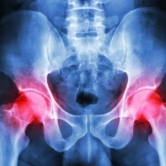Say Goodbye Your Chronic Back Pain With These Helpful Tips!
Did You Know Physiotherapy Could Help Provide Chronic Back Pain Relief? Do you periodically find yourself disabled by bouts of back pain? Do you experience ongoing back pain that never gives you a moment’s relief? Whatever form it may take, chronic back pain can put all kinds of limits on…




